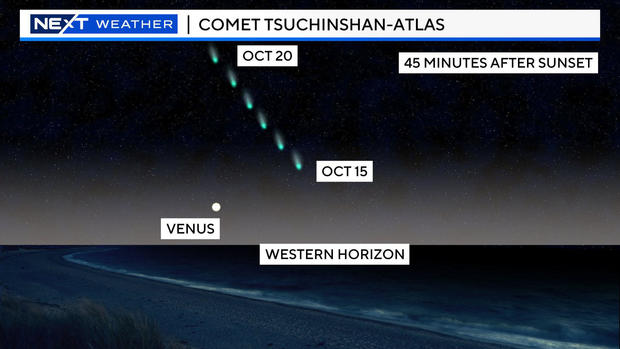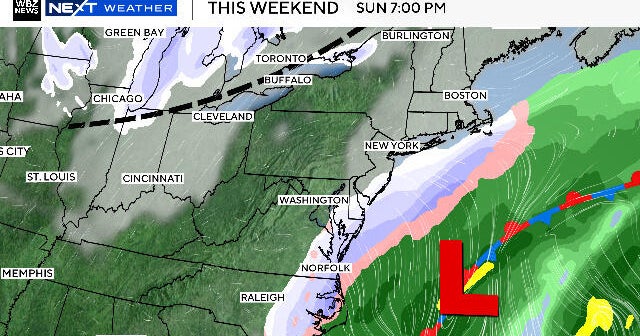Is Comet Atlas worth seeing? Expert explains why you should "relish the opportunity."
BOSTON - The massive comet that's starting to become visible in the night sky across the United States won't stick around for too long. And once it's gone, Comet Tsuchinshan-Atlas won't be seen again from Earth with the naked eye for another 80,000 years.
You'll need a clear view of the western horizon shortly after sunset between now and about Oct. 24 to see it, according to NASA. So is it worth venturing outside at dinner time to try and catch a glimpse of this celestial visitor?
Space weather expert Shawn Dahl says "people should relish the opportunity to see something so rare." He said he could see the enormous comet easily on Monday from his vantage point in Wyoming.
"It is very spectacular," the forecaster with the Space Weather Prediction Center said.
Comet Atlas has a huge tail - and an anti-tail
One thing viewers will notice immediately is the comet's tail of ice and dust, which is believed to be as long as 18 million miles.
"The tail is huge," Dahl told CBS Boston executive weather producer Terry Eliasen. "It's created by the solar wind and the interaction with the sun."
Comet Atlas has even developed an anti-tail, which Dahl explains appears to be a small, thin line in front of the comet but is not what it seems.
"That tail kind of points in the direction of the sun, but it's really an optical illusion," he said. "It's just a change in the perspective from Earth."
Where did the comet come from?
Dahl said that Comet Atlas has "been on a long journey."
"It came from the outer reaches of our solar system, something on the order of 1-2 light years away," Dahl said. "It's a very long-period comet."
According to NASA, the comet originated in the Oort Cloud, which is well beyond Pluto and is thought to contain billions or trillions of pieces of space debris.
How can you see the comet?
The best time to look is about 45 minutes after sunset. Dahl advises looking for an area up and to the right of Venus, the brightest "star-like" object in the evening sky.
You can bring binoculars but they're not needed.
"You just have to be patient and eventually it's at a magnitude that's going to be visible with your naked eye pretty soon after darkness," he said.
The incredibly rare comet sighting, the total solar eclipse from April and last week's stunning northern lights show make this one of the best years for skygazers that Dahl can remember.
"Everything lining up like this, it's just so fantastic because it really draws awareness to the beauty of outer space and our interactions with elements in our solar system, but also to space weather and how important it actually is," he said.









